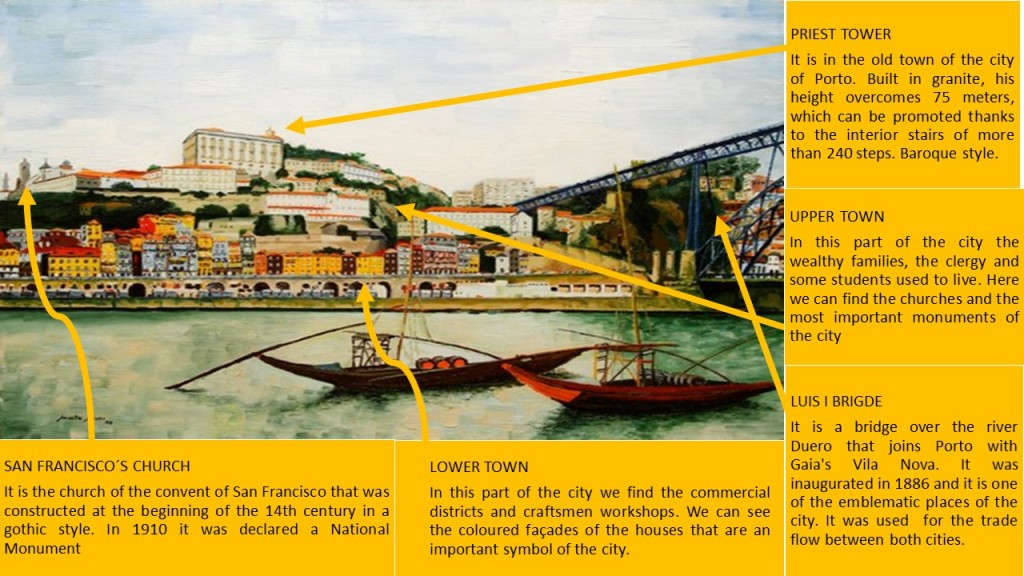PORTO (Marta Moro, 2009)
Porto is the most important city of Portugal, after Lisbon. It had 237.559 inhabitants in the year 2011, but is still growing. Porto is situated to the east of Portugal, in the estuary of the river Duero. This work of art belongs to the artist Marta Moro and shows a perspective of the city of Porto, focusing on the zone near to the Duero shores, where daily activity takes place. Also, it shows on the right the bridge of Luis I, one of the most emblematic monuments of the city.
As we can see in the picture, this city is divided in two parts: lower town and upper town. The lower town is the poorest part of Porto and there used to live workers and merchants because it is next to the river, where the trade flows. The upper town is the historical and richer zone, where the nobility and clergy lived. Here we can find the most emblematic sites of Porto, such as the Priest Tower and San Francisco´s Church. The image also shows two little boats in the foreground; they were used to move goods and people from one shore to the other shore of the river Duero.
One of the most important elements of the image is the bridge Luis I. In the past it was used as a connection between Porto and Gaia and also as a way for moving goods and people. It possesses two floors. The superior has approximately 390 meters of length and the lower one approximately 174 meters. The superior floor holds the line D of Oporto metro, whereas the lower route is dedicated to other vehicles like cars, buses or trucks.
As secondary aspects, the image portrays with a great amount of details and chromatic variety how the city was in the past. We can see the colouring façades near to the shore of the river. It used to be habitual to paint the houses with different colours and in Porto this tradition continues nowadays. Since it is an ancient city, without no urban plan in its centre, there are no big open spaces and the streets are narrow. At present there is a line of streetcar that crosses the city centre. In both sides of the image it is possible to appreciate that constructions go on more beyond: this is an indicative that the city continues growing in both directions along the river.
Porto is known as the city of the bridges, there are around ten bridges, of different ages, and most of them cross the river connecting Porto with Gaia. Porto is a city walled and the history tells that it resisted three attempts of conquest on the part of the troops of Napoleon.
Rubén Villaseca

